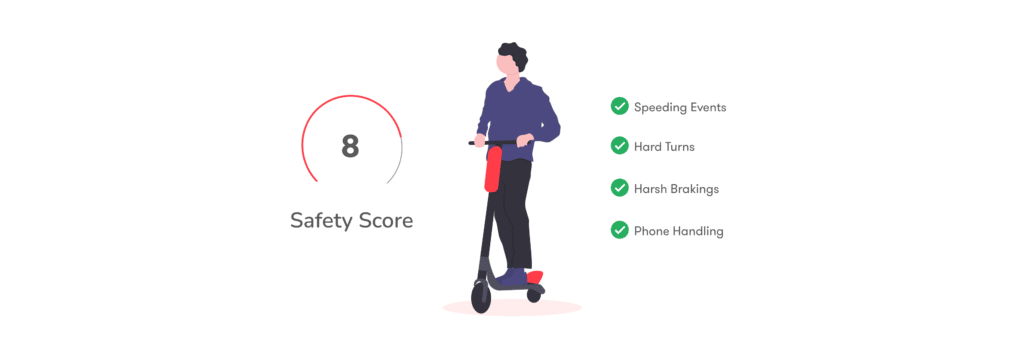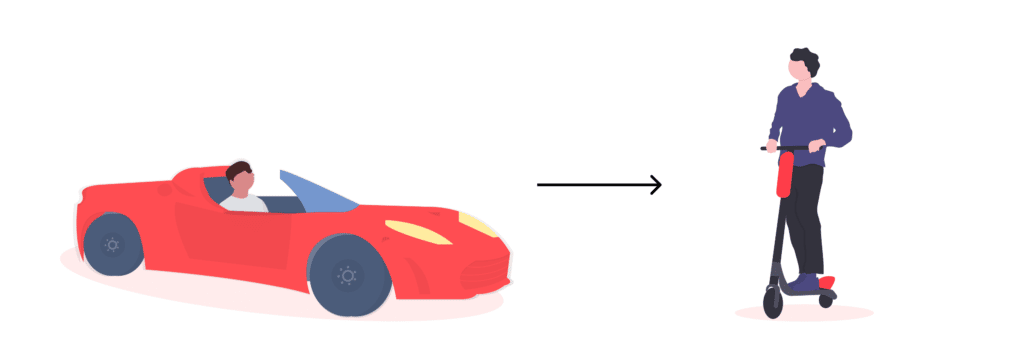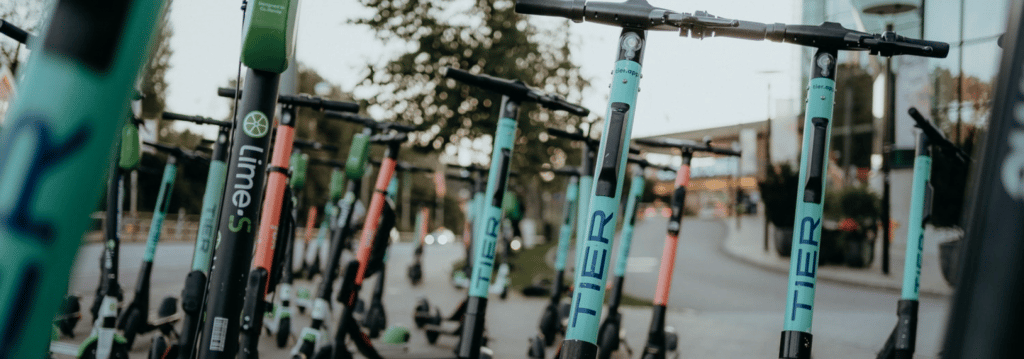Despite a mobility slowdown during the peak of Covid-19, micromobility usage, such as e-scooters and bicycles, has seen exponential growth in major cities around the world.
Since 2019, the number of shared e-scooter, e-bike, and e-moped deployments in Europe has tripled, as more cities realize the safety and sustainability benefits of LEVs (light electric vehicles).
However, as we see the micromobility landscape consolidate, competition has never been more fierce to win new cities. To dig deeper into the micromobility industry, and learn more about the opportunities and threats, we caught up with Urban Mobility Strategist, Jade Ebenezer.

Jade, a "new mobility" expert, has a breadth of experience working and consulting for companies including Ubeeqo, TRL (Transport Research Laboratory), Circ, Superpedestrian, and Zwings. In this conversation, we discover three exciting opportunities that micromobility players can focus on to win new markets:
-
Safety: Using data to monitor vehicle, rider and other road-user safety.
-
Sustainability: Using data to show a positive modality shift towards greener modes of transport.
-
Partnerships: Establishing symbiotic partnerships that leverage data for good.

Safety
"Safety is Number One for Micromobility"
Oliver: What are the main challenges micromobility companies are facing today?
Jade: "From an operator perspective, the priority is certainly winning new cities. From a business model perspective, this is a B-to-G business (business to government). A key priority for all transport-bodies is safety. That's because the sentiment around e-scooters is polarized and governments cannot afford to be seen to be negligent when it comes to people's lives. "
Oliver: What are the e-scooter providers doing today to address safety?
Jade: "Most players are working to position themselves as the safest e-scooter service provider in the industry. To date, most of the progress has focused on the hardware side, such as increasing the diameter of the wheels and wheelbase, updated braking systems, adding reflective lighting, audible sounds and turn indicators.
Interestingly, a large number of reported accidents happen on a user's first ride. So, what many e-scooter businesses have now started doing is offering a "beginner mode" for first-time riders. It has a speed limit and other innovations to make the e-scooter more stable and secure. We have also started to see in-app tutorials and in-person or virtual workshops. I believe the next big innovation on the software side will be monitoring how safe each individual is riding and coaching/rewarding them to ride safer."
Oliver: How, if at all, are e-scooter companies tracking and reporting back on accidents today?
Jade: "In most cases, unless a user reports an incident, we are simply not aware of it. So, it would be fair to say that most incidents are unreported. There is a business that has taken up a trial with one of the leading e-scooter companies, to detect collisions, so there is definitely a keen interest around this ability. Let’s see what the results show in the coming months.
Detecting collisions would be a valuable capability to have as an operator. It goes without saying that the more information you understand around collisions, the more likely you would be able to prevent them. We don't know enough about accidents. We don't seem to have the technology that is able to identify crashes actively and how to deal with such. Innovation in this domain is needed.”

Sustainability
"It would be invaluable to show a sustainable mobility shift with actual data."
Oliver: What are micromobility operators currently doing to address sustainability?
Jade: "There is certainly a big focus on operators to become carbon neutral or better yet, climate positive. From a competitive tender perspective, sustainability generally accounts for a significant weighting. It’s imperative for operators to score well here if they want to be in the race.
Today, as an industry, we are using a pretty rudimentary approach when it comes to reporting on positive modality-shift. The industry mainly uses online surveys to riders and field observation which. As you can imagine, does not provide a comprehensive insight into what is really happening. The nirvana here is full visibility into a population's mobility profile. This is what makes Sentiance so interesting in this regard.
As we move forward, in this B-to-G business, holistic mobility data will be a competitive advantage. "
Oliver: Today, how are e-scooter companies showing local authorities that their operations are contributing towards a positive modality shift? For example, showing that people are taking an e-scooter from the train station to the office instead of catching a taxi or driving a car.
Jade: "What we are seeing in the ongoing UK trials is an average trip length of almost 6 miles. Based on these journeys, it's easy to assume that the longer trips are replacing car trips, bus or other forms of propelled transport, but these are just assumptions. The reality is that these longer trips could be cannibalizing active travel such as walking or cycling. So, I would say that today, we are combining sparse data (trip duration) with survey data and field observation to make the case, but it would be invaluable to show modality-shift with full visibility into a population's mobility patterns."

Partnerships
Making micromobility companies stronger with data
Oliver: Would you share some insights into the dynamics of the collaborations we have seen between high street retailers and e-scooter companies?
Jade: "E-scooters, unless authorized by local authorities on public land in the UK are still not allowed. So in order to expand their reach, e-scooter companies partner with local businesses in areas they operate to extend their parking network. Retailers in return receive increased footfall to their stores and e-scooter companies expand their reach.
Micromobility companies want to put the right amount of vehicles at the right location to meet demand and maximize usage. So, the more data there is to show how people are traveling, and which routes and areas have more demand, the easier it is to establish these symbiotic relationships"
Oliver: What other ‘type’ of partnerships built on data are you seeing/expect to see in the next couple of years?
Jade: Like every industry, data is, and will continue to be, what separates the winners and losers. Micromoblity needs to meet the needs of riders, municipalities, and investors that got the industry going. With tight margins and huge capex costs, the only way this business is going to succeed is by working smart, and by this, I mean with data. We have already seen good ground being made using data on the hardware side. The scope to better serve the customer, prevent accidents and illustrate that the industry is truly making cities greener and less congested. This is where I see new partnerships being formed.

Data is everything for micromobility companies
"In 2020, micromobility was challenged with the slowdown resulting from COVID. As the world opens up we can see from the numbers that there is a significant increase in micromobility usage and sales. Now, more than ever, is the time for operators to take advantage of data to improve service for riders and improve overall operational efficiencies."
-- Oliver Bath, Head of Client Solutions at Sentiance
With the Sentiance Mobility Profiler, you can identify which transport modes your customers are using. The detection is based on analyzing a smartphone’s sensor data. In addition to transport modes, you can also identify the duration, distance, and context of each trip segment.
Sentiance helps its clients understand their customers’ full mobility profile and the changes in their behaviors. To learn more about how the Sentiance Mobility Profiler can empower micromobility players to get actual data and support the safety, sustainability, and partnership perspective, get in touch today!


